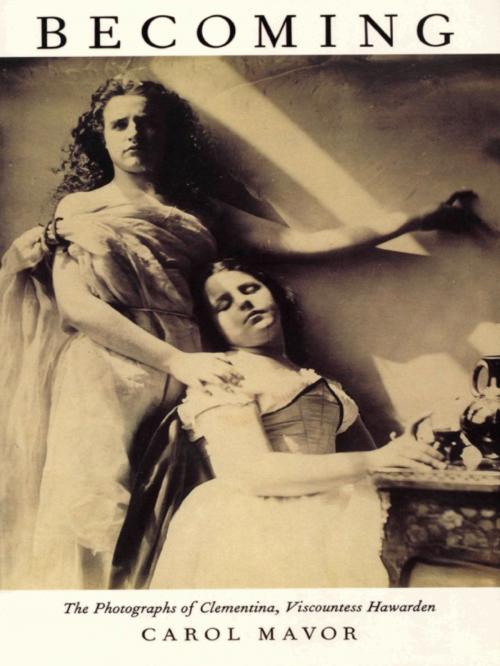Becoming
The Photographs of Clementina, Viscountess Hawarden
Nonfiction, Art & Architecture, Photography, Individual Photographer, Artists, Architects & Photographers| Author: | Carol Mavor | ISBN: | 9780822396154 |
| Publisher: | Duke University Press | Publication: | August 25, 1999 |
| Imprint: | Duke University Press Books | Language: | English |
| Author: | Carol Mavor |
| ISBN: | 9780822396154 |
| Publisher: | Duke University Press |
| Publication: | August 25, 1999 |
| Imprint: | Duke University Press Books |
| Language: | English |
Clementina, Viscountess Hawarden (1822–1865) produced over eight hundred photographs during her all-too-brief life. Most of these were portraits of her adolescent daughters. By whisking away the furniture and bric-a-brac common in scenes of upper-class homes of the Victorian period, Lady Hawarden transformed the sitting room of her London residence into a photographic studio—a private space for taking surprising photos of her daughters in fancy dress. In Carol Mavor’s hands, these pictures become windows into Victorian culture, eroticism, mother-daughter relationships, and intimacy.
With drama, wit, and verve, Lady Hawarden’s girls, becoming women, entwine each other, their mirrored reflections and select feminine objects (an Indian traveling cabinet, a Gothic-style desk, a shell-covered box) as homoerotic partners. The resulting mise-en-scène is secretive, private, delicious, and arguably queer—a girltopia ripe with maternality and adolescent flirtation, as touching as it is erotic. Luxuriating in the photographs’ interpretive possibilities, Mavor makes illuminating connections between Hawarden and other artists and writers, including Vermeer, Christina Rossetti, George Eliot, Lewis Carroll, and twentieth-century photographers Sally Mann and Francesca Woodman. Weaving psychoanalytic theory and other photographic analyses into her work, Mavor contemplates the experience of the photograph and considers the relationship of Hawarden’s works to the concept of the female fetish, to voyeurism, mirrors and lenses, and twins and doubling. Under the spell of Roland Barthes, Mavor’s voice unveils the peculiarities of the erotic in Lady Hawarden’s images through a writerly approach that remembers and rewrites adolescence as sustained desire.
In turn autobiographical, theoretical, historical, and analytical, Mavor’s study caresses these mysteriously ripped and scissored images into fables of sapphic love and the real magic of photography.
Clementina, Viscountess Hawarden (1822–1865) produced over eight hundred photographs during her all-too-brief life. Most of these were portraits of her adolescent daughters. By whisking away the furniture and bric-a-brac common in scenes of upper-class homes of the Victorian period, Lady Hawarden transformed the sitting room of her London residence into a photographic studio—a private space for taking surprising photos of her daughters in fancy dress. In Carol Mavor’s hands, these pictures become windows into Victorian culture, eroticism, mother-daughter relationships, and intimacy.
With drama, wit, and verve, Lady Hawarden’s girls, becoming women, entwine each other, their mirrored reflections and select feminine objects (an Indian traveling cabinet, a Gothic-style desk, a shell-covered box) as homoerotic partners. The resulting mise-en-scène is secretive, private, delicious, and arguably queer—a girltopia ripe with maternality and adolescent flirtation, as touching as it is erotic. Luxuriating in the photographs’ interpretive possibilities, Mavor makes illuminating connections between Hawarden and other artists and writers, including Vermeer, Christina Rossetti, George Eliot, Lewis Carroll, and twentieth-century photographers Sally Mann and Francesca Woodman. Weaving psychoanalytic theory and other photographic analyses into her work, Mavor contemplates the experience of the photograph and considers the relationship of Hawarden’s works to the concept of the female fetish, to voyeurism, mirrors and lenses, and twins and doubling. Under the spell of Roland Barthes, Mavor’s voice unveils the peculiarities of the erotic in Lady Hawarden’s images through a writerly approach that remembers and rewrites adolescence as sustained desire.
In turn autobiographical, theoretical, historical, and analytical, Mavor’s study caresses these mysteriously ripped and scissored images into fables of sapphic love and the real magic of photography.















